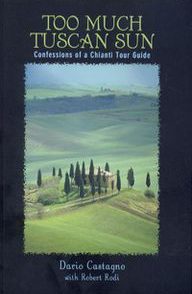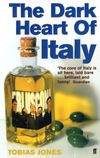With his second novel, The Secrets of Sant’Angelo, Jeff Shapiro brings his readers back to the quiet Tuscan village of Sant’Angelo d’Asso, to bask in the earthy warmth and wisdom of its simpleminded denizens.
The rural peace is shattered when a series of spooky misfortunes is followed by the appearance of a decidedly queer couple. Rosa Spina and Emanuele Mosé, mother and son, arrive at the town’s railway station bar, quaintly dressed in fingerless gloves and exuding a rummy charisma. A good deal more rumminess ensues.
Bitter fights break out between Petula, who works in the bar, and Daniele, the father of her child. Drunk and giddy from the sight of Rosa Spina’s breasts, Cappelli, the town waterworks man, invites the strangers to take up residence in a disused apartment in his house. The pair clean it up and use it as the base for their faith-healing racket. With a few poisonous words, the more feeble-minded members of the town are incited to rise in a wave of antisemitism, boycotting then attacking the Jewish newspaper-seller. Even the local priest takes up the challenge of speaking to the charlatan and challenging his peculiar power. Meanwhile Emanuele Mosé’s twin, the charming L’Altro, turns up fresh out of prison and makes a generally good impression, seducing Petula. Though set somewhere near Siena, this novel is not drenched in Tuscan sun. The large part of the action takes place in winter, allowing Shapiro to escape accusations of pure armchair travel. But he clearly desires to anchor the novel in Tuscany, where he has lived in since 1991. His Italy is characterized by an incorrigible carnivorism, a laissez-faire attitude to electrical wiring and an instinctive religiosity heavily laced with superstition. He peppers his dialogue with Italian words and literal translations of Italian phrases which sometimes seem a bit undigested but communicate his emotional attachment to the language. Some of the best passages are vignettes of local life, including a great little rustic chorus in the butcher’s shop, gossiping amidst slabs of meat and bits of offal being sliced up and packed into bags for the customers.
Shapiro’s village is populated by a set of colourfully variegated characters and once you have digested the peculiarities of the first couple of chapters, the plot rips along at a good rate. The town’s eponymous ‘secrets’ spin on until the novel’s end and amidst the dramatic climax, you can be sure that the book’s protagonists learn a thing or two about love, friendship, faith and themselves.







